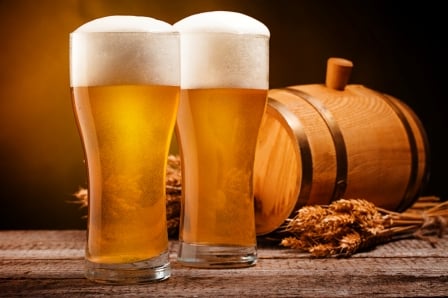This week I take a look at the best way to incorporate spices and flavor extracts into your beer brewing process.
Examples of Spices, Herbs and Flavor Extracts
Beer was not traditionally made with hops. In fact, the use of hops in beer dates back only about 500 years, while beer itself was introduced at least 4000 years ago. Prior to the introduction of hops, beer was made using a wide variety of common spices, herbs, and even flowers and bitter fruits to counter the sweetness of the malt.
Many modern beers include spices. For example Belgian Wit is often made with coriander and bitter orange peel. Holiday ales include nutmeg and cinnamon. Cocao nibs are used in many stouts. Another modern example is the South American reboot of Chicha beer I discussed with Gordon Strong in this podcast. Other examples include paradise seed, vanilla, chili powder, jalapenos, various oaks, fruit peels, hazelnut, ginger, spruce tips, juniper berries, lemon grass, licorice root, sassafras, seeds of paradise, and various flowers and common herbs.
Add to this many artificial and natural fruit extracts which can be used to flavor your finished beer including tart cherry, peach, orange, lemon, blackberry, blueberry, cranberry and black currant to name just a few.
The Best Way to Incorporate Spices and Flavor Extracts in Brewing
The biggest challenge with incorporating spices, herbs or extracts into your beer is simply getting the amount right. It can be very hard to judge how much chili powder or spruce tip extract your ale needs to achieve the ideal flavor balance. As a result I’ve made spruce beer that tastes more like pine tar, and had jalapeno beer that would make a Hatch chili fan whimper. Even subtle flavors like vanilla can be hard to get right, especially when working directly with vanilla beans.
After making several bad beers, I’ve decided the best way to incorporate these flavors is really to add them “to taste” in the finished beer. For spices, herbs and similar items you make a tea using hot water to extract the flavor first, then mix the “spice tea” in with your beer. For flavor extracts, you can add them directly in small quantities. Some ingredients, like vanilla beans, do better with extended steeps in a neutral flavored alcohol like plain vodka. Ideally you want a fairly concentrated tea, concentrated extract or alcohol to use as an addition.
Once you have your spiced additive, measure out a predetermined amount of beer (say 100 ml) and then carefully add a measured amount of your additive. Taste it and adjust the amounts until you have the balance right. Then I recommend pouring a clean sample, add your determined amount of tea or extract, and verify that the final balance is correct.
Now its a simple matter of scaling everything up. For example if you added 3ml of extract to 100 ml of beer, you can calculate that, for 20 liters (a bit over 5 gal) of beer you need to scale everything up by a factor of 200x or add 600ml of extract to your 20 liter batch. Simply scale up the extract addition proportionally to match your overall batch size.
So that is the best way to get your overall beer balance correct. I recommend doing this before carbonating the beer as in some cases adding a water based tea can kick off a small amount of fermentation. Using an alcohol based extract will typically not do this however.
I hope you enjoy this week’s summary of spices and beer the BeerSmith Home Brewing Blog. Please subscribe for regular weekly delivery, and don’t hesitate to leave a comment or send this article to a friend.
Related Beer Brewing Articles from BeerSmith:
- Backsweetening Beer, Mead and Cider Using BeerSmith
- Beer Blending Strategies for Home Brewers
- Saison Beer – Belgian Farmhouse Ale Recipes
- Brewing Fruit Beers at Home Part 2 of 2
- Golden Stout Beer Brewing
- How to Make Hard Cider – The Easy Way
- Brewing a Christmas, Holiday or Winter Seasonal Beer
- Hop Forms and New Hop Products
Don't make another bad batch of beer! Give BeerSmith a try - you'll brew your best beer ever.
Download a free 21 day trial of BeerSmith now




{ 0 comments… add one now }